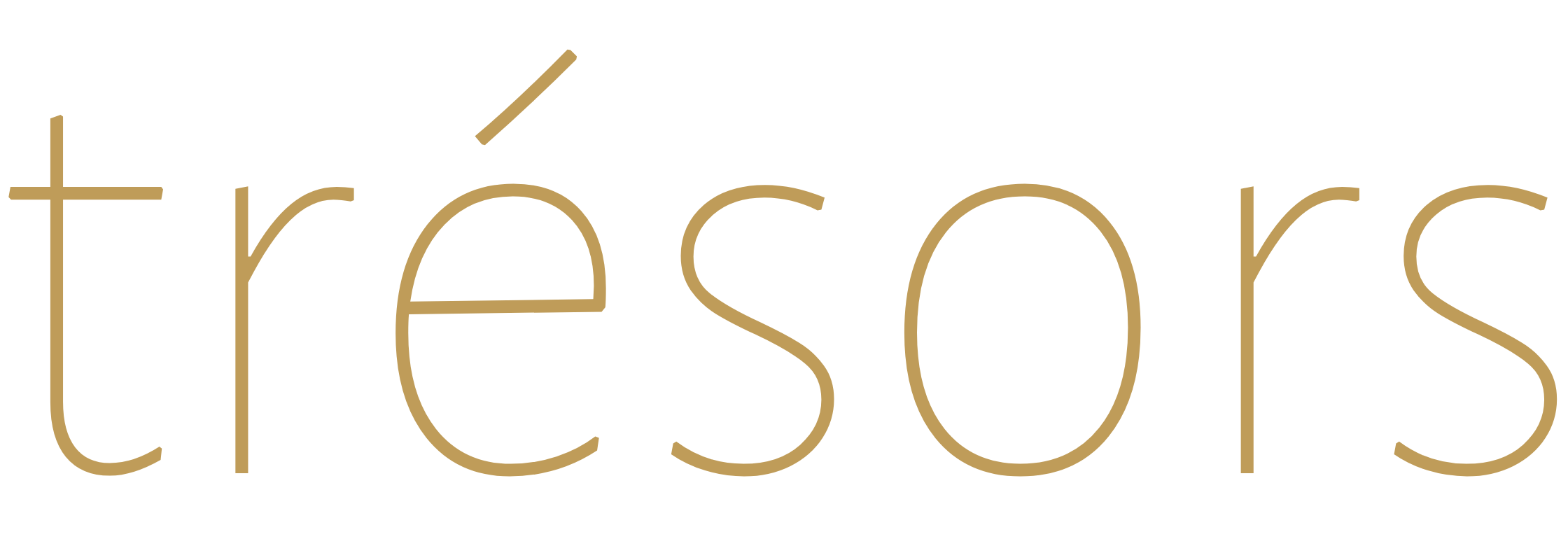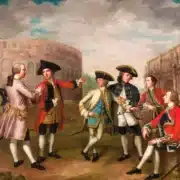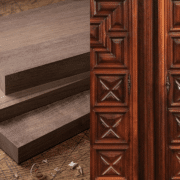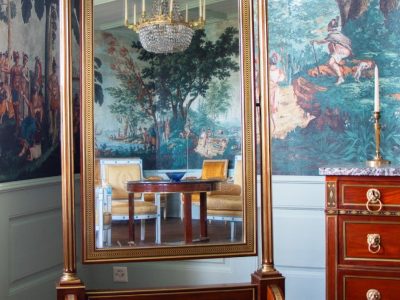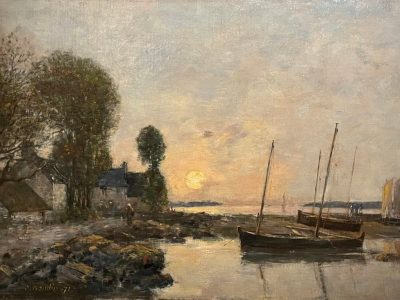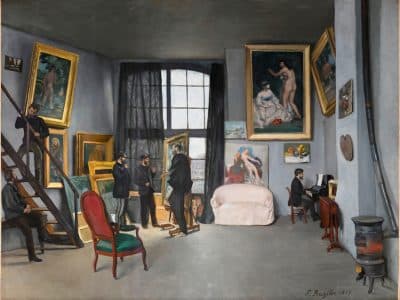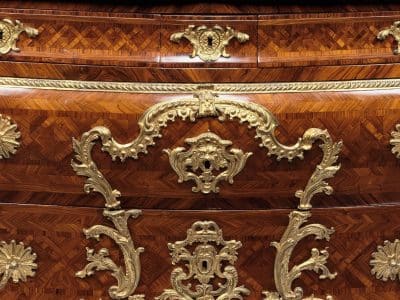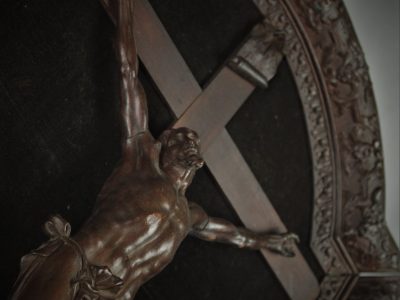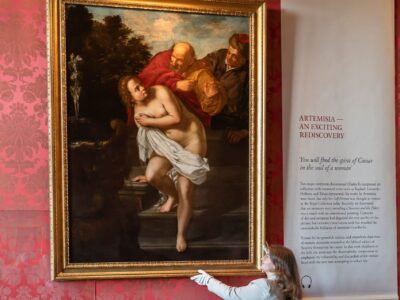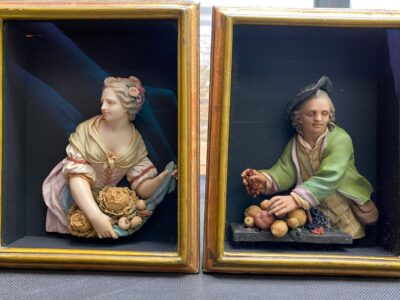Jean Lurçat (1892-1966) was a French artist, designer, and ceramicist who made significant contributions to the modernist movement of the 20th century and was responsible for revitalizing tapestry as a fine art form.
He is best known for his large-scale tapestries, which transformed the medium from a decorative craft into a serious art that could convey complex ideas and emotions. Lurçat was also a prolific painter, ceramicist, and writer who worked tirelessly to promote the role of the artist in society and the importance of art in everyday life. Lurçat’s contributions to the art world were significant and he is widely regarded as one of the most influential artists of his time.

“Eaux noires” (Dark Waters) by Jean Lurçat. Wool Aubusson tapestry woven by the Goubely workshop, 1965. © The Boccara Collection.
Early Life and Career
Jean Lurçat was born in Bruyères, a small town in northeastern France, on July 1, 1892. Initially studying medicine, Lurçat changed paths and went to study under Victor Prouvé, the head of the École de Nancy. In 1912 he traveled to Paris with his brother, where he enrolled at the Académie Colarossi and the workshop of engraver Bernard Naundin. He also traveled extensively throughout Europe, studying the works of the Old Masters and absorbing the latest trends in contemporary art. He became well connected in the art scene, meeting other influential figures like Matisse, Cézanne, and Renoir. Lurçat’s studies were interrupted in 1915 when he was drafted into the French army to serve in World War I. During this time, he continued to sketch and paint, using whatever materials he could find. After being relieved from his duties due to injuries sustained on the battlefield, he returned to France and resumed his work as an artist.
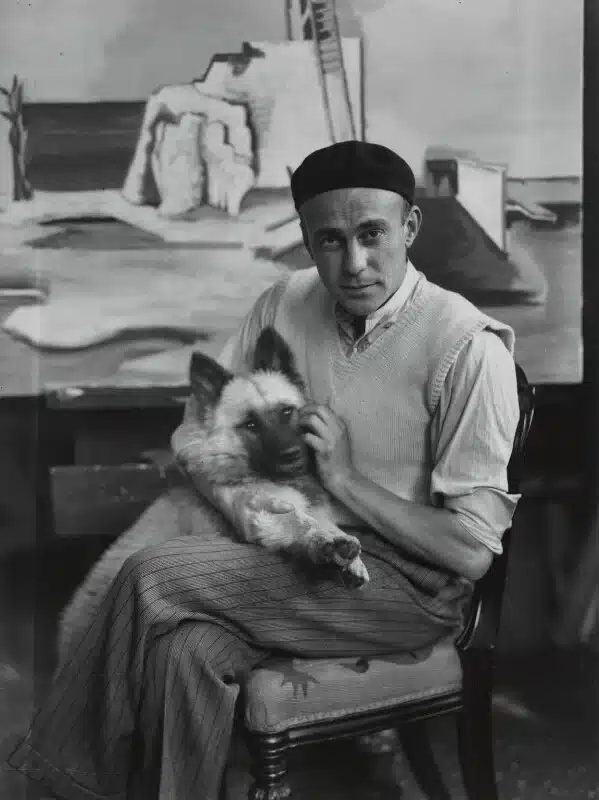
Jean Lurçat photographed by André Kertész. Bromide print, 1928. © Estate of André Kertész
Lurçat’s early career was marked by experimentation and a restless search for new forms of expression. He began as a painter, creating works that were influenced by the Fauvist and Cubist movements. In the 1920s, he became interested in ceramics and began producing decorative objects that combined traditional techniques with modernist designs. He also wrote poetry and essays, and was involved in various political and social causes. In 1925, Lurçat was invited to participate in the Exposition Internationale des Arts Décoratifs et Industriels Modernes in Paris, a landmark event in the history of modern design. He exhibited his ceramics and was recognized as one of the leading figures of the emerging modernist movement.
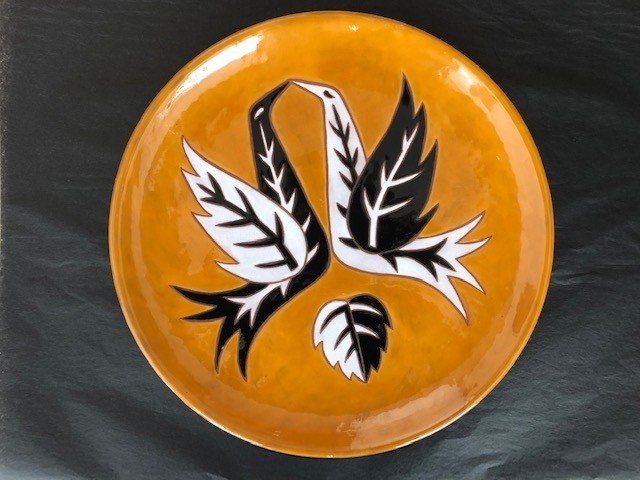
Decorative Dish with bird motif by Jean Lurçat, 1950. © Galerie de Monval
Discovery of Tapestry
In the 1930s, Lurçat became interested in tapestry weaving, a traditional craft that had fallen out of favor in the modern era. He was drawn to the medium’s tactile qualities and its potential for creating large-scale works that could be displayed in public spaces. He also saw tapestry weaving as a way to unite art and industry, and to create works that were accessible to a wider audience. Lurçat began working with the French tapestry workshop of Aubusson, which had a long tradition of producing high-quality tapestries for the French aristocracy. He was initially frustrated by the workshop’s conservative approach and its reluctance to experiment with new techniques and designs. However, he gradually won over the weavers with his innovative designs and his willingness to collaborate with them on the technical aspects of the weaving process.
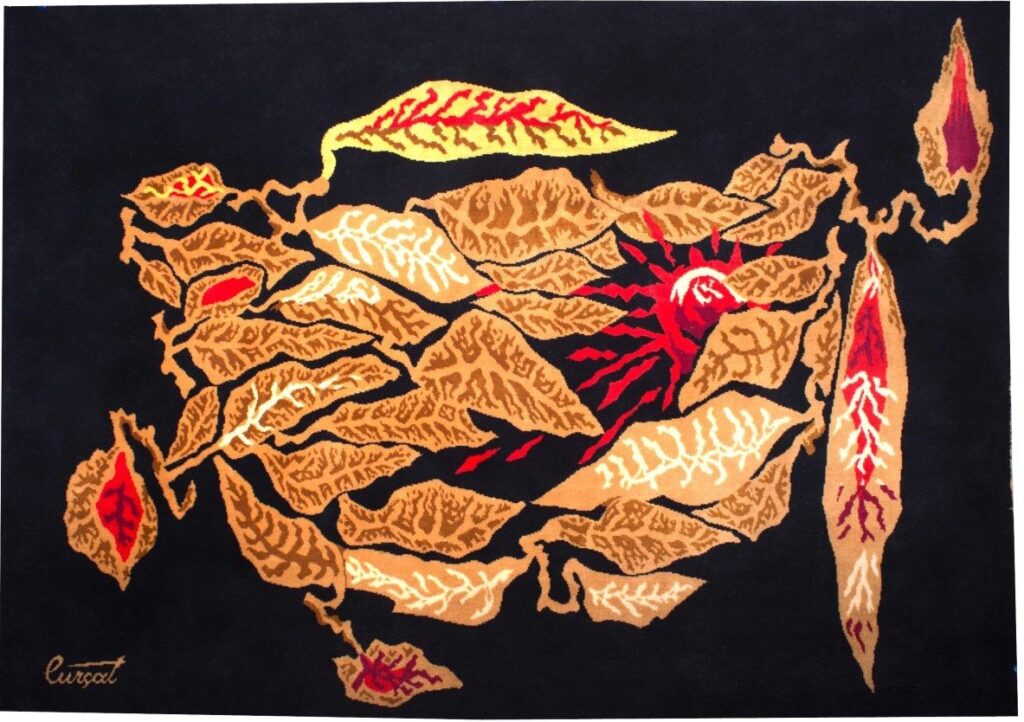
“Leaves and Sun” by Jean Lurçat. Wool and cotton Aubusson tapestry, 20th century. © Style French Antiques
Typically constructed from high quality wool and silk, Lurçat’s tapestries were characterized by bold colors, geometric shapes, and simplified forms that reflected his interest in primitive art and his belief in the power of simple, direct expression. He also incorporated narrative elements into his works, using symbols and allegories to convey complex ideas and emotions. His tapestries often depicted scenes from mythology, history, or everyday life, and were infused with a sense of human drama and emotion. He was especially fond of depicting birds and other animals in his work, particularly roosters. The sun and moon are also significant thematic elements, as he thought deeply about the cosmos and human’s relationship with it. Lurçat’s tapestries were an instant sensation, and he quickly became known as the leading figure of the modernist tapestry movement. His works were exhibited throughout Europe and the United States, and he received numerous commissions for public buildings and private residences.
For a long time, I feel a physical satisfaction as soon as I trace a circle… Me, once I traced my circle, I suddenly have the impression that I handle the world, that’s why I immediately, almost always, introduce water and fire… With my circles, my suns, I am like a preacher who stroll in the countryside repeating, ‘There is only one God, only one God, our God, everything is God…’” — Jean Lurçat
One of Lurçat’s most famous tapestries is the “Le Chant du Monde” (Song of the World), which he created in 1957 for the UNESCO headquarters in Paris. The tapestry, which measures over 200 square meters, depicts a sweeping panorama of the natural world, from the oceans to the mountains to the skies above. “Le Chant du Monde” is notable for its intricate design, which incorporates a wide range of elements, including animals, plants, and celestial bodies, and is filled with symbols of life, death, and rebirth. The tapestry is also notable for its use of color, which ranges from deep blues and greens to bright yellows and oranges. It is considered one of the greatest works of modern tapestry and a masterpiece of 20th-century art.
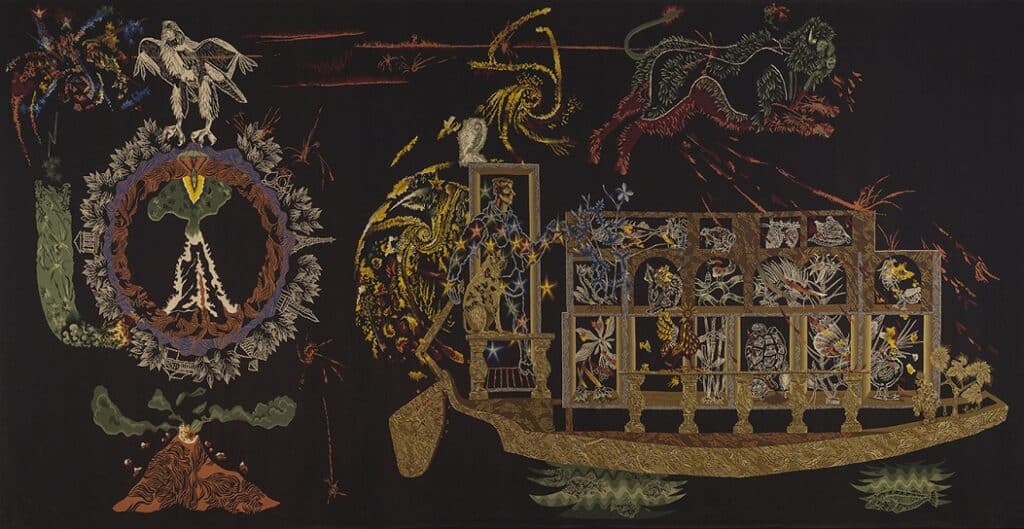
“La Grande Menace” (The Great Threat), section of “Le Chant du Monde” by Jean Lurçat. Aubusson tapestry produced by Atelier Tabard, 1957. © Musées d’Angers
Revival and Innovation
Lurçat’s innovative techniques and designs helped to elevate tapestry to a fine art form, and his contributions to the medium were widely recognized. While tapestry had long existed as a craft, it had largely fallen out of fashion and was often considered a folk craft or decor, rather than art. One of the key elements that set Lurçat’s tapestries apart from the kinds of tapestry that previously existed was his use of bold, geometric designs. His tapestries featured stylized forms, such as animals and human figures, rendered in a simplified, almost abstract style. This gave his work a sense of modernity that was unique in the world of tapestry.
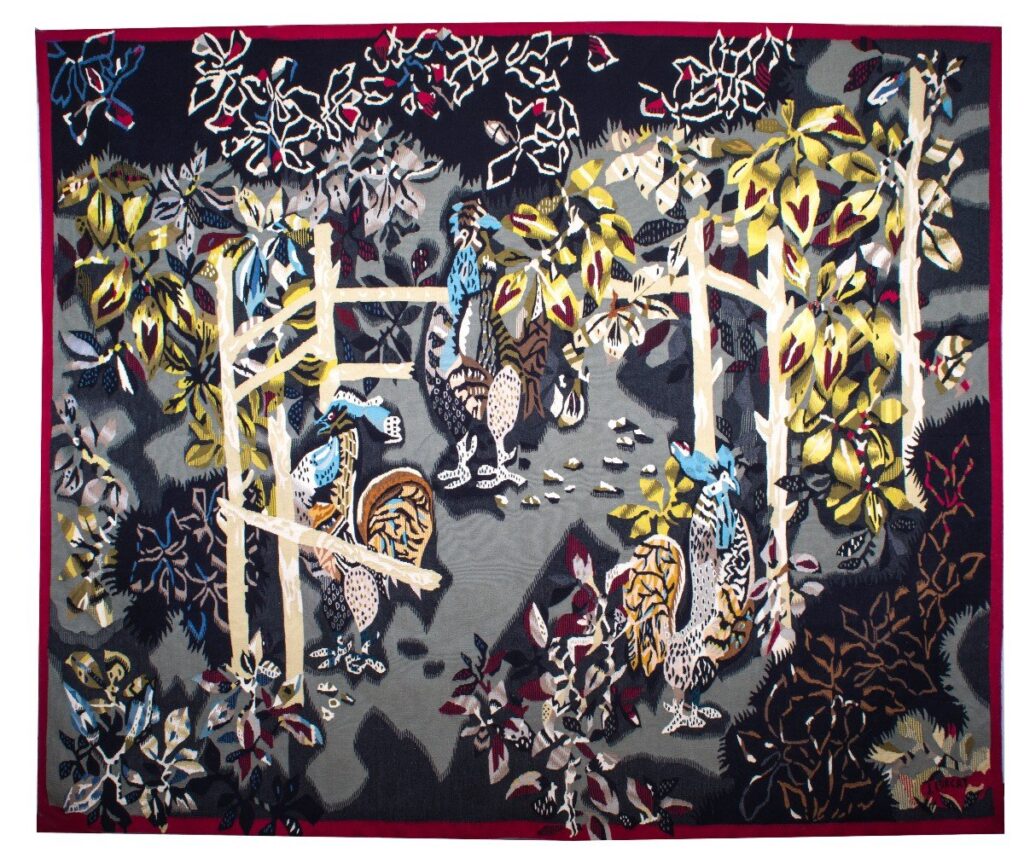
“Jardin Des Coqs” (Garden of Roosters) by Jean Lurçat. Wool and cotton Aubusson tapestry produced by Atelier Tabard, 1939-1940. © Style French Antiques
Lurçat’s use of color was also distinctive. He made frequent use of bold, contrasting colors, creating a sense of movement and energy in his designs. He was particularly fond of deep blues, greens, and reds, and his use of these colors helped to give his work a sense of depth and richness. This depth and richness was highlighted by his use of black backgrounds, which provided great contrast. His use of the “cartoon” technique was another distinctive element of his work that involved creating a full-scale drawing of the design, which could then be transferred to the loom. The technique allowed for greater precision in tapestry design and helped to elevate the medium to a fine art form.
In addition to his unique style and use of materials, another thing that set his tapestries apart from earlier forms of tapestry were the social and political messages he conveyed through them. These were not merely objects to be admired for their beauty, they said something. Lurçat was a committed anti-fascist and humanitarian who used his art to promote social justice and equality. His tapestries often depicted scenes from everyday life, such as farm work or street scenes, and he used these images to celebrate the dignity and humanity of ordinary people. They tackled important themes about life, the human existence, and the world around us.
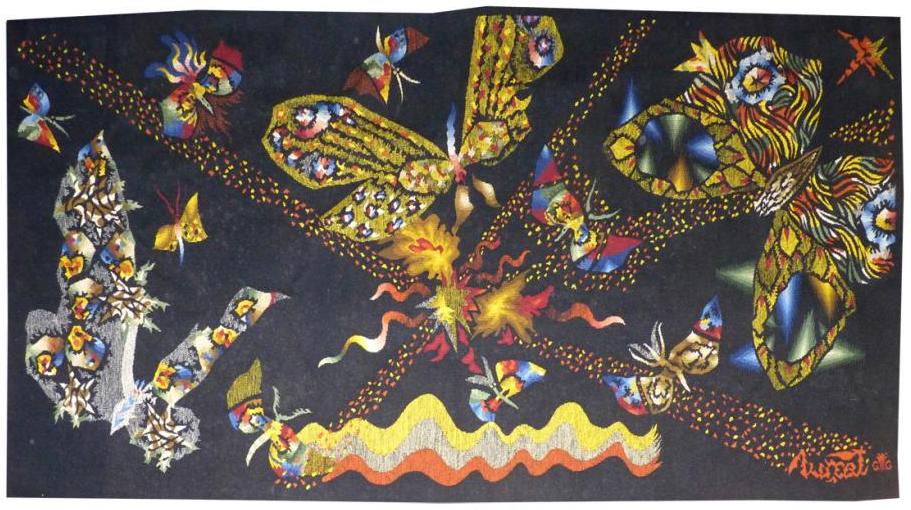
“Tout Flamme” (All Flame) by Jean Lurçat. Wool Aubusson tapestry, 20th century. © Sébastien Meunier
Lurçat’s Legacy
Jean Lurçat was an influential figure in the modernist movement and his revival of tapestry weaving had a lasting impact on the medium. His innovative designs and use of narrative elements transformed tapestry weaving from a decorative craft into a serious art form that could convey emotion and depth of thought. He also helped to establish the role of the artist in the industrial production of art, and his work inspired a new generation of designers to experiment with new materials and techniques. His tapestries are highly sought after by collectors and museums, and many of his works are now held in prestigious collections around the world. Lurçat’s legacy can also be seen in the work of contemporary tapestry weavers, who continue to draw inspiration from his bold designs and use of symbolism. His innovative techniques and unique designs have left a lasting impact on the world of tapestry and continue to inspire and influence contemporary artists and collectors alike.
Lurçat’s political activism and social engagement also had a lasting impact on the art world. He believed that art should be accessible to all people, and that artists had a responsibility to use their talents to promote social justice and equality. A vocal critic of fascism and authoritarianism, his work often addressed themes of war, peace, and the human condition. The political agenda of his works and those of his like-minded contemporaries had a major impact on the direction that modern art would take. He was a true visionary, and his contributions to the art world will be remembered for generations to come.
You May Like
Jean Lurçat | Tapestry | Mid-Century-Modern Pottery | 1950-1960 Design

